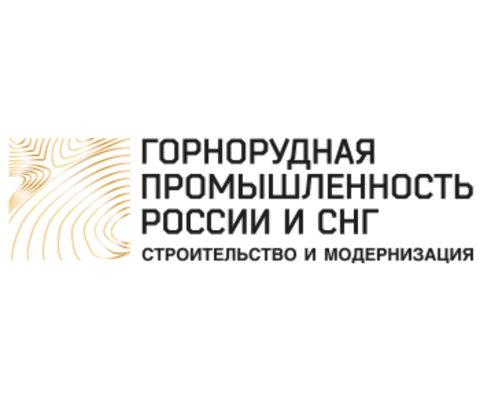Designing of engineering solutions to enhance efficiency of high-copper gold-bearing ore processing
- M.V. Zalesov1, 2, V.A. Grigoreva1, 2, V.S. Trubilov1, A.Ya. Boduen2
1 RIVS Company, St. Petersburg, Russian Federation
2 Saint Petersburg Mining University, St. Petersburg, Russian Federation
Russian Mining Industry №5 / 2021 р. 51-56
Abstract: The modern metals industry is characterised by a downward trend in the quality of ores involved in processing, and conventional methods of extracting useful components are inefficient for raw materials with complex composition. To maintain the growing level of metal production it is required to introduce new efficient technologies for processing of low-grade and refractory ores as well as man-made deposits. The article describes processing methods of refractory raw materials with high cyanide content using copper-gold ores as an example, where gold is the primary commodity, and copper is the accompanying useful component. The most common method of processing copper-gold ores is preconcentration followed by selective leaching of copper and gold. In some cases, technologies involving copper by-products and cyanide recovery from the cyanide leaching solutions offer equally effective options for processing of the copper-gold ores and concentrates. Copper-gold ores are processed at gold mines using the cyanide procedures, supplemented if required by gravity and flotation concentration. In all variations of the cyanide treatment, most of copper minerals actively react with cyanides of alkali metals, binding the CN– ions into the copper complex of [Cu(CN3)]2–. This reaction results in an increased solvent consumption, as well as in number of challenges related to cleaning tailings and slurries from highly toxic cyanide compounds and dissolved copper. In addition to technological complications associated with the need to meet strict requirements for the maximum permissible concentrations, copper accumulated in the cycling solutions also causes a decrease in gold extraction from the processed ores.
Keywords: refractory ores, gold, copper, flotation, cyanide procedures, cold desorption, SART-technology
For citation: Zalesov M.V., Grigoreva V.A., Trubilov V.S., Boduen A.Ya. Designing of engineering solutions to enhance efficiency of high-copper gold-bearing ore processing. Gornaya promyshlennost = Russian Mining Industry. 2021;(5):51–56. (In Russ.) DOI: 10.30686/1609-9192-2021-5-51-56.
Article info
Received: 08.08.2021
Revised: 13.09.2021
Accepted: 14.09.2021
Information about the authors
Maksim V. Zalesov – Lead Process Engineer, RIVS Company; Post-graduate student, Saint Petersburg Mining University, St. Petersburg, Russian Federation, e-mail: This email address is being protected from spambots. You need JavaScript enabled to view it.
Viktoria A. Grigoreva – Process Engineer, RIVS Company; Master student, Saint Petersburg Mining University, St. Petersburg, Russian Federation
Vasily S. Trubilov – Director of Hydrometallurgical Department, RIVS Company, St. Petersburg, Russian Federation
Anna Ya. Boduen – Candidate of Technical Sciences (PhD in Engineering), Associate Professor, Deputy Head of the Metallurgy Department, Saint Petersburg Mining University, St. Petersburg, Russian Federation
References
1. Zaitsev P.V., Pleshkov M.A., Shneerson Ya.M., Haakana T., Tiihonen J., Juopperi P. Development of autoclave technology for processing of copper-gold raw materials. Zoloto i tekhnologii. 2016;(1):62–68. (In Russ.)
2. Muir D.M. A review of the selective leaching of gold from oxidised copper–gold ores with ammonia–cyanide and new insights for plant control and operation. Minerals Engineering. 2011;24(6):576–582. https://doi.org/10.1016/j.mineng.2010.08.022
3. Muir D.M., Lа Brooy S.R., Fenton K. Processing copper-gold ores with ammonia or ammonia-cyanide solutions [C]. In: Proceedings of the World Gold’91 Conference. Cairns: Australasian Inst Min Metall/SME, Littleton, Co.; 1991, pp. 145–150.
4. Vorobiev-Desyatovsky N.V. Refractory ores: features, reasons of refractory properties and ways to deal with them. Presentation at the Gold and Technology International Conference. – Mining World Russia, 2018. (In Russ.) Available at: https://zolteh.ru/wp-content/uploads/2018/05/Prezent_conf_ZiT_Vorobev-Desyatovskiy_Polimetall_ing.pdf
5. Lodeyshchikov V.V. Gold processing plants of the world: an analytical review. Irkutsk: Irgiredmet; 2005. (In Russ.)
6. Muir D.M., La Brooy S.R., Cao C. Recovery of Gold from copper-bearing ores. In: Harden R.J. (ed.) Gold Forum on Technology and Practices: World Gold 1989. Littlton, Colorado, USA; 1989. P. 363–374.
7. Dreisinger D.B. Treatment of gold ores using cyanide or thiosulphate leach solutions. In: Hydromatallurgy: Current Practice, Short course. Perth, Australian Mineral Foundation; 1998.
8. Vorobev-Desyatovskiy N.V., Ermakov D.V. Basic problems of decontamination of cyanide-containing solutions and slurries of Russian gold mining industry. Part 4. Processes, based on extraction and reuse of cyanides. Tsvetnye Metally. 2014;(11):49–55. (In Russ.) Available at: https://www.rudmet.ru/journal/1359/article/23318/
9. Taylor A. Gold Technology Developments and Trends. ALTA Metallurgical Services. Australia; 2011.
10. Williams L. Barrick's $3 Billion Pueblo Viejo Gold Mine Finish Copper Plan. International Mining; 2009.
11. Barchenkov V.V. How to restore sorption properties of activated carbon. Zolotodobycha. 2017;(4):8–13. (In Russ.) Available at: https://zolotodb.ru/article/11622




